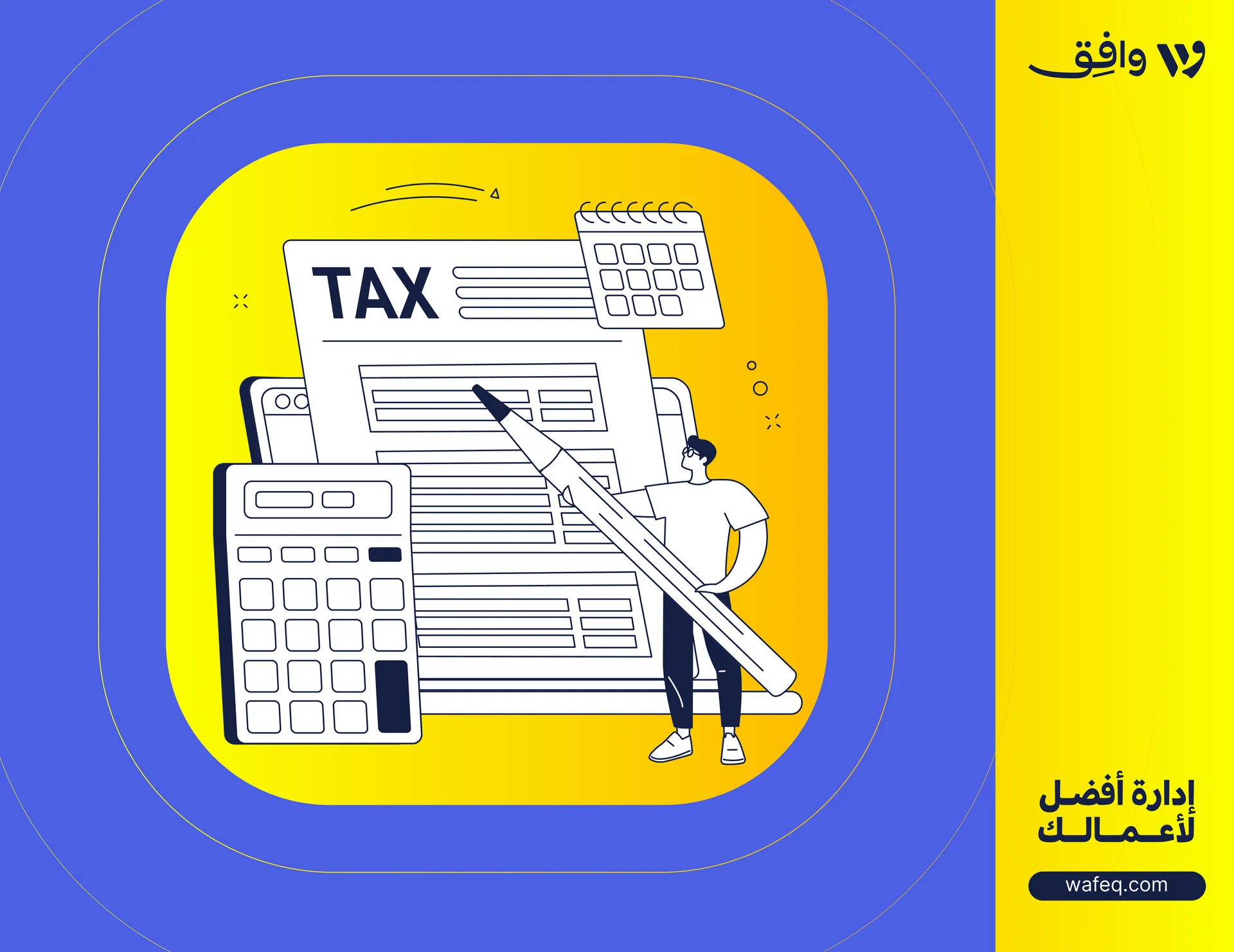Payment Vouchers Explained: Purpose, Format, and Best Practice [Free Template]
![Payment Vouchers Explained: Purpose, Format, and Best Practice [Free Template]](https://firebasestorage.googleapis.com/v0/b/wafeq-docs.appspot.com/o/medias%2F1af56400_سند الصرف_ الغرض والنموذج وأفضل الممارسات [مع نموذج مجاني].png?alt=media)
A missing approval, unclear payment purpose, and a delayed audit? These are just a few problems that could arise when payments are made without proper documentation. The payment voucher plays a quiet but powerful role in preventing these issues. It tells the full story of a payment, who authorized it, why it was made, and how it was processed. This document protects every organized accounting system, bringing clarity and control to daily financial operations.
What is a Payment Voucher in Accounting?
A payment voucher is a written document that records an authorized disbursement made by a business. It confirms that a payment has been approved, verified, and completed under internal financial procedures. Think of it as a bridge between the accounting records and the actual payment process, whether through cash, bank transfer, or cheque.
Payment vouchers are crucial in both manual and digital accounting systems. They create a clear trail for auditors, protect the company from unauthorized spending, and serve as proof of payment in future disputes.
Typical uses of payment vouchers include vendor payments, reimbursements, utility bills, advances, and petty cash. In larger organizations, payment vouchers are often part of a larger workflow that contains purchase orders, approvals, and financial reviews.
Main Components of a Payment Voucher
A well-prepared payment voucher contains specific details that ensure clarity, traceability, and proper authorization. Each component plays a key role in confirming the legitimacy and accuracy of the transaction. These are the most common elements found in a payment voucher:
- Voucher Number: A unique serial number for tracking and reference.
- Date: The issuance date of the voucher.
- Payee Information: Name and details of the individual or entity receiving the payment.
- Payment Amount: The full amount disbursed, including tax or deductions if applicable.
- Purpose of Payment: A short description stating why the payment is being made.
- Payment Method: Whether the payment is via cash, cheque, bank transfer, or other methods.
- Account Codes: The general ledger accounts associated with the expense.
- Prepared By: The name or ID of the person who created the voucher.
- Approved By: Signature or digital approval from an authorized person.
- Supporting Documents: Invoices, receipts, or any relevant documents are attached for reference.
Ready-made Payment Voucher Template

Download a free Payment Voucher Template
Types of Payment Vouchers
Payment vouchers come in several types depending on the nature of the transaction and the payment method used. Understanding these types helps ensure that each expense is recorded under the correct category and in compliance with internal policies.
- Cash Payment Voucher It is used when payments are made directly in cash, such as small purchases, local reimbursements, or petty cash expenses.
- Bank Payment Voucher Issued for payments processed through a bank transfer, cheque, or any digital banking platform. Typically used for vendor payments, salaries, or large expenses.
- Petty Cash Voucher A simplified version of the cash voucher, used for tiny expenses such as office supplies, snacks, or courier fees. These are often summarized and reimbursed periodically.
- Advance Payment Voucher Used when issuing an advance to an employee or vendor. The amount is later settled or adjusted against actual expenses.
- Internal Payment Voucher Used for payments made between departments or business units within the same organization, often for budget allocation or internal cost transfers.
Why Payment Vouchers Matter in Financial Control
Payment vouchers are more than just routine documents; they are vital tools for enforcing financial discipline and ensuring accountability within the organization. Without them, financial operations become vulnerable to errors, misuse, and a lack of transparency. Here’s why payment vouchers are essential for financial control:
- Internal Control and Compliance Vouchers act as internal checkpoints. They confirm that every payment is authorized, supported with valid documentation, and aligned with company policy.
- Fraud Prevention By requiring approvals and documentation, vouchers reduce the risk of unauthorized or duplicate payments and help detect suspicious activity.
- Accurate Expense Tracking Each voucher is linked to a specific account and cost center, ensuring expenses are properly classified and reported.
- Audit Readiness Auditors often rely on payment vouchers to trace payment trails, verify spending, and ensure financial statements are backed by evidence.
- Improved Decision-Making Reliable voucher data allows financial managers to analyze spending patterns and make informed budgeting decisions.
How to Prepare a Payment Voucher (Step-by-Step)
Issuing a payment voucher requires following a few steps to ensure every payment is justified, approved, and recorded properly. The process should follow a standard structure to ensure compliance, whether the voucher is created manually or through accounting software.
- Identify the Payment Purpose Start by confirming the reason for the payment, such as a supplier invoice, service contract, or employee reimbursement.
- Collect Required Documentation Gather any documents related to the payment, including invoices, receipts, agreements, or internal requests.
- Fill in Voucher Details Make sure it includes the Voucher number and date, the Name of the person or company receiving the payment, the Payment amount, the Payment method (cash, cheque, bank transfer), and a Description of the expense.
- Assign the Proper Account Code Record the appropriate general ledger account that corresponds to the nature of the expense.
- Approval and Authorization Send the voucher for approval to the designated finance or management personnel before releasing the payment.
- Record the Voucher in the Accounting System Input the details into your accounting system for accurate financial reporting and reconciliation.
- Store and Archive the Voucher Ensure the voucher and all attachments are saved securely for auditing and compliance purposes.
Top Payment Voucher Errors That Hurt Your Financial Accuracy
Even a small error in a payment voucher can create confusion, delay payments, or lead to compliance issues. Recognizing common mistakes is the first step to avoiding them and maintaining accurate records.
- Missing Supporting Documents A payment voucher without attached invoices, receipts, or approvals lacks credibility and can’t be verified during audits.
- Using Wrong Account Codes Posting the voucher to the wrong ledger account causes misclassification of expenses and distorts financial reports.
- Approvals Not Collected Skipping or delaying the required approval can lead to unauthorized payments and internal policy violations.
- Vague or Incomplete Descriptions Failing to explain the purpose of the payment clearly may raise questions and lead to delays in processing.
- Duplicate Vouchers Creating multiple vouchers for the same payment can result in overpayments and reconciliation issues.
- Delayed Recording Delaying the entry of vouchers into the accounting system can disrupt real-time reporting and cash flow accuracy.
Payment Voucher Accuracy: Proven Practices for Finance Teams
To ensure that a payment voucher serves its intended purpose, from authorization to audit trail, professionals must follow a set of best practices that align with accounting standards and internal controls:
- Standardize the Format Use a consistent template with mandatory fields like date, amount, purpose, recipient details, payment method, and approvals.
- Use Sequential Voucher Numbers Apply a clear, sequential numbering system for traceability and to prevent duplication or fraud.
- Ensure Supporting Documentation Attach all relevant documents, such as invoices, receipts, and authorization forms, to validate the disbursement.
- Implement Dual Authorization Require two levels of approval, particularly for payments above a threshold, to enforce financial control.
- Train Staff on Usage Educate employees across departments on how to fill and process payment vouchers correctly.
- Digitize the Process Leverage accounting software like Wafeq to automate the creation, approval, and archiving of payment vouchers.
- Regular Internal Review Periodically audit voucher records to detect errors, missing documentation, or policy violations.
Is a payment voucher considered a debit or credit entry?
It depends on the type of account being affected and the double-entry accounting rule. The payment voucher itself is a supporting document, not a journal entry. When issuing a payment voucher, the business is disbursing cash or an equivalent, meaning:
- The cash/bank account is credited (money is going out).
- The expense or liability account is debited (the purpose of the payment, e.g., supplier, salary, utility, etc.).
Example:
Example:
You issue a payment voucher for SAR 5,000 to pay a supplier:
Debit: Accounts Payable (Supplier) – SAR 5,000
Credit: Cash/Bank – SAR 5,000
- So, the payment voucher represents a credit to the cash account and a debit to the corresponding liability or expense account.
Read Also: How to choose the best receipt voucher form [with a free template download]
The payment voucher is more than just a financial document—it's a vital part of a company's internal control system. It ensures transparency, proper authorization, and accurate financial reporting. By understanding its purpose, knowing whether it's a debit or credit entry, using a clear and compliant format, and aligning with local regulations in Saudi Arabia and the UAE, businesses can strengthen their financial operations and reduce the risk of errors or fraud.
Using digital accounting platforms like Wafeq makes it easier to issue, archive, and audit payment vouchers, ensuring regulatory compliance and operational efficiency. Finance teams can focus on strategy and oversight instead of paperwork.
FAQs about the payment Voucher
What is the difference between a payment voucher and a receipt voucher?
A payment voucher documents money paid by the company to external parties, such as vendors or employees. In contrast, a receipt voucher records money received by the company, such as payments from customers or investors.
Is a payment voucher considered a debit or a credit?
In accounting entries, a payment voucher records a debit to the receiving party’s account (such as expenses or payables) and a credit to the cash or bank account, as it reduces the company’s available funds.
Who signs and approves a payment voucher within a company?
A payment voucher is typically signed by:
- The accountant who prepares it.
- The internal reviewer or auditor for verification.
- The financial manager or authorized signatory who approves the disbursement.
How should payment vouchers be stored for audit purposes?
Payment vouchers can be stored either physically in organized files by date or number, or digitally using accounting software. Cloud-based systems like Wafeq ensure secure archiving, quick access, and compliance with audit requirements.
Is it mandatory to issue a payment voucher for every company disbursement?
Yes, it is highly recommended to create a payment voucher for every payment, regardless of the amount, which in turn promotes transparency, proper documentation, and simplifies internal and external audits.
Simplify your financial processes and ensure full compliance with local regulations.
Simplify your financial processes and ensure full compliance with local regulations.
Our cloud-based accounting software helps to issue, track, and archive payment vouchers easily, ensuring accuracy, approval workflows, and audit readiness.








![How to Prepare a Price Quotation for companies [with Free Template Download]](https://firebasestorage.googleapis.com/v0/b/wafeq-docs.appspot.com/o/medias%2F531f7990_كيفية إعداد نموذج عرض سعر للشركات [مع تنزيل مجاني].png?alt=media)


![Generate Compliant Invoices in Minutes with ZATCA-Ready Tax Invoice Template [Ready to use]](https://firebasestorage.googleapis.com/v0/b/wafeq-docs.appspot.com/o/medias%2F9d50be18_الفاتورة الإلكترونية حسب هيئة الزكاة والضريبة والجمارك في السعودية.png?alt=media)